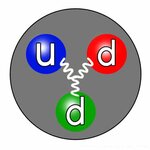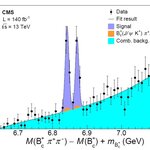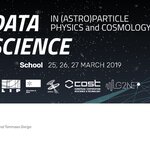Physics

Physics does not explain everything especially
why people who are trying to buck the mainstream all end up “looking alike”.
More likely this is a matter of broader socioeconomic conditions which limit
the options of those who wish to exist outside of the mainstream of society.
Unless a hipster makes their own clothing from scratch all they can do is
create new combinations of clothing worn by the majority. The number of
combinations being limited means that those who try to dress differently than
the majority wind up dressing like one of a small number of possible…

Croatian scientists have been engaged in scientific work at the European Organization for Nuclear Research (CERN) for close to 40 years. Croatian scientists worked on the SPS heavy-ion programme and in 1994, research groups from Split officially joined the CMS collaboration. One year later a research group from Zagreb joined the ALICE collaboration, working with Croatian industry partners to contribute to the construction of the experiments’ detectors.
Scientists from Croatia have also been involved in other CERN experiments such as CAST, NA61, ISOLDE, nTOF and OPERA and now they are…

I often read in the news about the new and exciting things that will be discovered if we invest big $$$ on new tech, such as a new big smasher 100 m below the surface of the Earth. This can of course be true; we have seen miraculous things being discovered in the field of particle physics, mainly due to the fact that a persistent vision by a group of scientists managed to continuously shed light on the harsh road of discovery.
And then I imagine being a nuclear scientist in the good old times when the only things we knew were the electron and the proton, when the term atomic nucleus was…

The ATLAS and CMS collaborations released yesterday a joint document where they discuss the combination of their measurements of the rate of production of single top quarks in proton-proton collisions delivered by the LHC collider. The exercise is not an idle one, as the physics behind the production processes is interesting, and its study as well as the precise comparison of experimental results and theory predictions improves our ability to predict other reactions, wherein we might find deviations from the currently accepted theory, the Standard Model.
For those who have not been introduced…

I am very happy to report today that the CMS experiment just confirmed to be an excellent spectrometer - as good as they get, I would say - by discovering two new excited B hadrons. The field of heavy meson spectroscopy proves once again to be rich with new gems ready to be unearthed, as we collect more data and dig deeper. For such discoveries to be made, collecting as many proton-proton collisions as possible is in fact the decisive factor, along with following up good ideas and preserving our will to not leave any stone unturned.
But let me stop geological analogies and explain very…

A school and symposium in Data Science in (Astro)-Particle Physics and Cosmology will be held on March 25 to 27 in Braga (Portugal). I am going to lecture on Machine Learning there, while prof. Glen Cowan will provide lectures in Statistics. I have provided a summary of the contents of my lectures in the previous post in this blog. The registrations to attend the school are now open, and I am distributing an announcement here.
Data Science in (Astro)Particle Physics and Cosmology: the Bridge to Industry
LIP, University of Minho, IDPASC and the COST action g2net are…

On March 25 to 27 will be held the school titled "Data Science in (astro)particle physics and cosmology", in Braga (Portugal). The lecturers are prof. Glen Cowan (RHUL), who will cover Statistics, and myself, who will cover topics in Machine Learning. I thought I would mention this here, as for me it is a novelty - in the past years I have often given lectures in advanced statistics topics at various Ph.D. schools around the world, but I never focused explicitly and solely on ML.
So what will I be covering in my 6 hours (well, 4.5 plus question time to be precise) of lectures? I plan to…

In the previous post I discussed, among other things, a purely empirical observation on the mass spectrum of elementary particles, which I summarized in a graph where on the vertical scale I put the year of discovery, and where I only cared to plot particles with a mass above a keV - in fact, we know that neutrinos have non-zero masses, but we have not measured them and they are of the order of an eV or below. Okay, for simplicity I will re-publish the graph below.
The graph shows that every time we furthered our exploration at the high-energy end of elementary particle spectra - with the…

I have long been of the opinion that writing about science for the public requires the writer to simplify things down to a level which is sometimes dangerously close to mislead the uninformed readers. I think is a small price to pay if you want to keep open the channel of communication with the general public, but it is indeed a narrow path the one you sometimes find yourself walking on, and fallacy is always a possible outcome.
In physics, it is common to observe science popularization writers dumbing things down way too much in order to explain some of its most arcane, unintuitive concepts…

As the well-informed readers will realize, I am hat-tipping Hank Campbell and the catchy title of his best-selling book "Science Left Behind" with the title of this post, for lack of more imagination. What I want to discuss is, however, something only partly in line with the interesting topics of Hank's book. It is something that I see happening around these days, and which I ache for: the dumbing down of our decision making in science.
It so happens that the plan of building a "Future Circular Collider" (FCC), a new large particle collider, is coming up for discussion as one of the main…